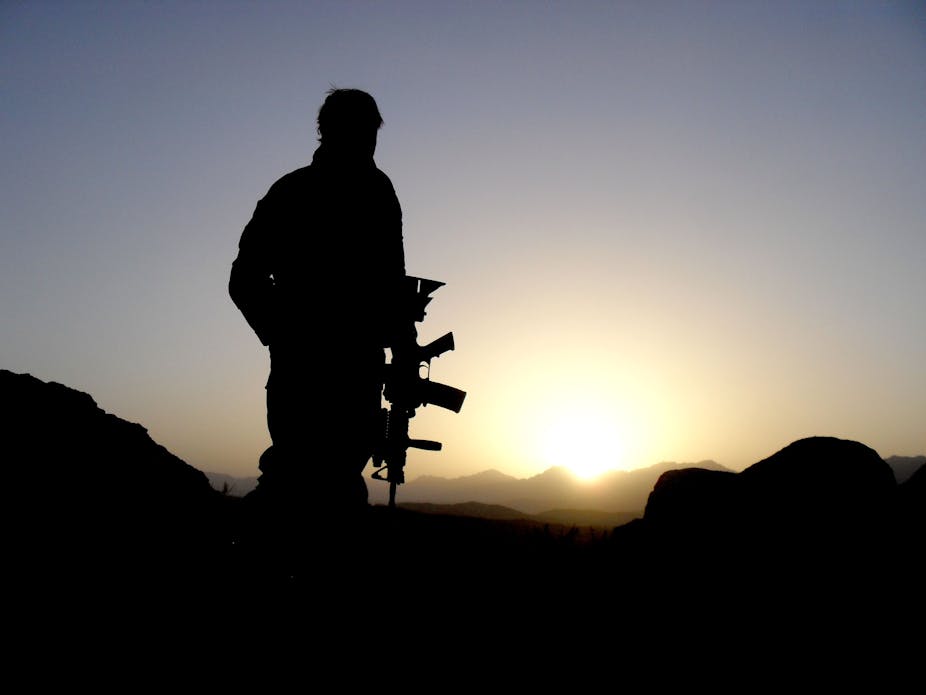I wish to serve my country and the national interest in the best way possible. Now women are to be allowed to serve on the front line becoming an infantry officer is a real possibility. But there are hurdles for the Australian military to overcome in these challenging, yet hopeful times.
Politics and policy
First, we cannot separate the politics from the policy. The Minister for Defence has declared that the policy of opening all ADF roles to women will be rolled out within five years.
I believe in gender equality in the armed services, but we should be clear about the timing of the announcement and its impact on this deadline.
Although political intentions can lead to progressive and positive outcomes, there will be pressure to produce the ADF’s first female Infantry platoon commander within the alloted timeframe.
There is every chance that the right women will pass through the ranks of Duntroon, the Army’s officer academy, or the Australian Defence Force Academy, a tri-service educational institution.
But the political reality is that without such a woman produced by that time, there is a risk that a focus on numbers as a measure of success may drive a particular outcome.
Physical standards
There is also confusion about physical standards.
The policy has been announced without a detailed plan of implementation; in particular, without any indication as to whether physical standards will be raised or lowered. As it stands, there are currently different physical fitness requirements for men and women wishing to enter the ADF.
We don’t know whether the final requirements for each ADF role will be the higher set of standards (that is, those for males) or will fall in between the standards.
If the physical standards are high, particularly for infantry and special forces units, and only a few women pass, then that is the reality of the situation.
The ADF will have a small proportion of willing and able women in these units. This only becomes problematic if it runs counter to political expectations of what sort of outcome would be achieved with the gender policy reform.
If standards are lowered, then there is some credence to protests of critics who predict a diminution of combat effectiveness.
Ultimately, it will be up to the Defence Science and Technology Organisation/University of Wollongong program to provide comprehensive research supported by robust data to determine the correct physical requirements commensurate with expected combat effectiveness.
Unit cohesion
There are legitimate concerns that unit cohesion will be affected. This is particularly important for the infantry, and essential for mission accomplishment. More women will be encouraged to apply in light of institutional and legal barriers being lifted, but the proportion of women in combat units is unlikely to be significant in number.
That said, a robust understanding of the realistic challenges these demographic changes will mean, especially for the infantry, is paramount.
An army is a complex system of individuals who, in arduous physical and psychological circumstances, must work cooperatively and efficiently in defence of the national interest.
The introduction of women in combat units will not rupture their espirt de corps but it will bring a range of psychological challenges to bear between soldiers and within units.
It will fall to unit commanders and army psychologists to manage these challenges but not without greater support from the Defence organisation.
Initiation
Let me take the extreme case of an Infantry platoon deployed at length to Afghanistan chronicled in Sebastian Junger’s book, “War”.
It is a visceral account of modern warfare that focuses on close quarters combat and intra-soldier relations. What Junger depicts is an extraordinary level of “brotherhood” forged between the men of Battle Company through a shared experience of killing, death, bullying, hazing, sexual deprivation, and immense psychological and emotional pressure.
Initiation into the unit is conducted by way of physical beating by the entire platoon, a practice tacitly condoned by officers who themselves undergo this process.
Whether these practices are right or wrong, an important question to ask is, how seminal are these experiences and these bonds to the role of fighting and killing in war?
Whether a woman would want to undergo such rites of passage in this case is immaterial. The question is, what sort of informal initiation processes actually exist and can be expected? Would male colleagues subject their female counterparts to this?
It is not to say that these sorts of practices necessarily exist in the Australia, or cannot change over time, but we must be open minded about the reality of what certain soldiers experience.
Female exceptionalism
Isolated cases of female snipers and Nancy Wakes are not enough in themselves to justify a cultural shift without adequate understanding of human complexities. Nancy Wake is often cited as proof that women can fight and kill alongside male operatives, but hers was a very different time and exceptional circumstance.
The very fact we celebrate her life and death with such fascination (noting that she was one of many other Special Operations Executive agents) suggests a sense of female exceptionalism that must be, over time, dismantled. Thus, the integration of women into all kinds of combat roles requires careful study.
It has been a momentous week for women in the ADF but we should pause to consider just what we’re asking men and women in uniform to do.

